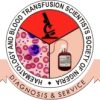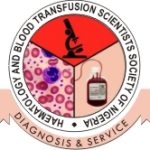doi.org/10.59708/ajlhts.v2i4.2333
Download PDF - 46 Downloads
Utility of World Health Organization Haematological Toxicity Scale in the Assessment of Smokers in Port Harcourt, Nigeria.
Akabs Ibise Jewel, Theresa Awortu Jeremiah, Zaccheaus Awortu Jeremiah,
1Department of Haematology and Blood Transfusion Science, Faculty of Medical Laboratory Science, Rivers State University, Port Harcourt,Nigeria.
2Department of Microbiology, Parasitology and Immunology, Faculty of Medical Laboratory Science, Federal University Otuoke, Otuoke, Nigeria.
Corresponding Author:
Prof Z.A.Jeremiah.
e-mail: zaccheaus.jeremiah@ust.edu.ng
Phone: +2348034045636
Running Title: WHO haematological toxicity scale and evaluation of smokers
Abstract
Introduction: This study was aimed at evaluating some haematological parameters among smokers in Port Harcourt, Rivers State and to ascertain if the effect of smoking can be assessed using the World Health Organization Haematological toxicity scale.
Materials and Methods: A cross-sectional study which involved 100 individuals (50 smokers and 50 non-smokers) within the ages of 20-45 years was used. Blood samples were collected by venipuncture into an EDTA anticoagulant bottle for haematological analysis of selected haematology parameters. The samples were processed using haematology auto analyser- SYSMEX KX-21. Statistical analysis was done using Graph Pad prism version 8.02 for windows. Comparisons of mean and standard deviation were made for the various parameters using student’s t-test.
Results: The mean values of haemaglobin for smokers (14.50 ± 1.773 g/dL) was significantly elevated when compared with 11.74 ±1.15 g/dL in non-smokers. (p≤ 0.0001). There was no statistically significant difference in the mean values of leucocyte count in smokers compared to non-smokers (p ≥ 0.05). The mean value of granulocyte count in smokers (4.52 ± 1.28 x 109/L) was significantly higher than that of non-smokers (3.81 ±.0.72 x109/L) (p ≤ 0.0008). The mean platelet count of smokers (236.0 ± 64.65×109/L) was significantly raised when compared with that of non-smokers (217.7 ± 42.71×109/L). In the control group, 8% were found to be anaemic corresponding to Grade 2 of the WHO toxicity scale (8-9.4g/dL) whereas all of the smokers were one hundred percent (100%) in grade 0 (≥ 11.0 g/dL). For the white blood cell count, majority of the control subjects were 90% grade 2 (3.0-3.9×109/L) whereas among the smokers, they were 100% in grade 0. For the platelets, all the control subjects were 100% grade 0 (≥×109/L) while 2% of the smokers (test) fell into grade 1 (75-99×109/L) of the WHO toxicity scale ( ie mild thrombocytopenia).
Conclusion: We concluded that smoking causes a significant elevation of haemogobin and granulocytes and at the same time elevated platelet counts whereas 2% of smokers fell into grade 1 of the toxicity scale. This effect may be more pronounced if a longer duration of smoking and a larger sample is considered in further studies.
Keywords: WHO toxicity scale; Haematological Parameters,smokers,

